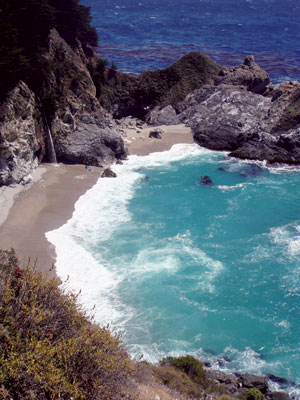All Nonfiction
- Bullying
- Books
- Academic
- Author Interviews
- Celebrity interviews
- College Articles
- College Essays
- Educator of the Year
- Heroes
- Interviews
- Memoir
- Personal Experience
- Sports
- Travel & Culture
All Opinions
- Bullying
- Current Events / Politics
- Discrimination
- Drugs / Alcohol / Smoking
- Entertainment / Celebrities
- Environment
- Love / Relationships
- Movies / Music / TV
- Pop Culture / Trends
- School / College
- Social Issues / Civics
- Spirituality / Religion
- Sports / Hobbies
All Hot Topics
- Bullying
- Community Service
- Environment
- Health
- Letters to the Editor
- Pride & Prejudice
- What Matters
- Back
Summer Guide
- Program Links
- Program Reviews
- Back
College Guide
- College Links
- College Reviews
- College Essays
- College Articles
- Back
Desalination Downfalls
Although environmentalists view desalination as a breakthrough solution, the method turns counterproductive and inefficient under particular circumstances. This occurs in countries such as Saudi Arabia, where citizens resort to desalination to provide about 60% of their drinking needs. (Environmental Justice Atlas) While certainly bringing hope to the Saudi Arabian people after repeated water shortages, an issue arises about the oil that fuels their desalination plants. Utilizing oil as fuel becomes counterproductive because the fresh water produced will later be used to extract more oil, creating a cycle of loss and inefficiency. To further exacerbate the situation, the burning of oil contributes towards carbon dioxide emissions and climate change. In turn, climate change results in droughts, which actually causes the water shortages that desalination attempts to alleviate.
Desalination fails to provide adequate amounts of clean water but overwhelmingly succeeds in yielding harmful waste material known as brine. Initially, scientists approximated the recovery ratio at one to one. However, the study revealed that 1.5 times more brine collects in relation to the filtered water. These statistics indicate that desalination creates around 51.8 billion cubic meters of brine every year, which can submerge the entire state of Florida in one foot of waste. (National Geographic) Potential hazards stemming from brine disposal (such as higher temperatures of the waste) threatens marine life, but the long-term effects remain unclear.
For centuries, human activity has diminished the health of multiple ecosystems. Desalination lies among many factors that contribute to the reckless treatment of nature. Even the very start of the process jeopardizes marine organisms due to the technological designs. First, the desalination method begins with screens intended to roughly filter water, which ends up trapping and killing large organisms such as fish; experts call this disaster impingement. Following up, creatures such as plankton slip through the screens due to their microscopic size but eventually die during the steps involving salt removal. Specialists refer to this misfortune as entrainment. (Pacinst) These examples demonstrate the failure to realize the long-term consequences of environmental destruction caused by desalination.
The eagerness of discovering a potential solution to water shortages has caused businesses to turn a blind eye towards hidden dangers posed by desalination. Overall, desalinating water may provide drinking opportunities for many, but also burns up tremendous quantities of non-renewable resources while purifying only about half of the initial intake. By-products of this procedure also contain brine. Unaware of the influences brine disposal presents to marine ecosystems, facilities deposit the saline waste into habitats and damage vulnerable life.

Similar Articles
JOIN THE DISCUSSION
This article has 0 comments.

This piece is part of a research project on the desalination process. Desalination is a method in which salt is extracted from seawater, leaving us with clean drinking sources. The two types of desalination techniques I researched were reverse osmosis and distillation. Reverse osmosis puts pressure on water and pushes it through filters, while distillation heats up saltwater and condenses the fresh vapors. This article summarizes the disadvantages with these methods and desalination as a whole.